- Getting around Lijiang. Dont stay in the Old Towns more than 2 days, there is nothing to do. KRISS Oct 9, 2013 05:46
- 2013 Beijing Temple Fair BENNYLAU Feb 26, 2013 03:29
- Malaysian traveling from KUL - LAX vis Shanghai PVG ZATI_DY Jan 3, 2013 20:15
The Great Wall: Jinshanling to Simatai
- Views: 8068
- |Vote: 1 0
- |Add to Favorites
- |Recommend to Friends
An Old Decision
Some things change and some things stay the same. It is nearly 4 years ago now that I, by chance, stayed at a hostel in a quiet hutong somewhere in Beijing. It just happened that the hostel organised trips out to the Great Wall, and that I, new and language-less in the vast capital of the People’s Republic of China, decided to take it.
It turns out that it was one of my better decisions, which is why, this winter, I wanted to go back to that section of the Wall and retrace my steps: to feel again the power and history of its stone beneath my feet.
The Passage of Time
In 2005, Nanluogu Hutong was a typical old-style Beijing alley. Along its length, the well-known Passby Bar, with its walls lined with books, its cosy courtyard, its English menu, red wine and coffee, was the only taste of “the outside”. A few Chinese restaurants, with Chinese menus and curious owners were to be found here and there, but even in the shady comfort of a summer’s day, the hutong crept along in the quiet manner of hutongs past: the tringing of bicycle bells, the footsteps of locals and the casual passing of time.
In 2009, winter, 6.30 in the morning with the temperature well-below zero and the sun still not risen, the hutong sounds just the same as it used to – but in the proliferation of boutiques, bars and the neon English language signs – Nanluogu Hutong has changed beyond almost all recognition... even the Passby Bar has encased its traditional courtyard in a rigid frame of metal and glass.
The backpackers where the trip originates remains though, and wrapped up tight against the chill I bundle, with 6 others, into a minivan. Our host hands us tickets, a route map and instructions, a small badge reading “A-Club” (well that didn’t happen before) and explains:
“When you get to the wall turn left, NOT right, and keep walking.”
Arriving at Jinshanling
In 2005, the last 30 minutes of the 3 hour journey to Jinshanling was up a dirt path. The minivan hopped, skipped and jumped, my stomach with it and my head had several brushes with the roof. We were dropped off in hilly terrain with the Great Wall not even visible; a few local souvenir sellers and self-appointed guides pointed their fingers, and we followed. The heat was just beginning to sizzle; the shrubs hummed in waves to the beat of cicadas’ abdomens, and the desiccated grass crackled with the escape of tiny geckos. After hiking upwards for 20 minutes or so, I remember the Wall appeared impossibly suddenly, as though some magic had kept it hitherto from our eyes.
In 2009 the last 30 minutes of the journey are spent on a smooth tarmacked road, where we stop at some well-maintained toilets before passing through a vehicle checkpoint. The dull-green clad security guard waves us through and we reach a car-park, big enough for coaches, that signals the end of the road. We exit the van, show our tickets at the metal turnstiles, and proceed along the tarmac and up the stone steps until the Great Wall, hitherto hidden, appears... and with it, the obligatory souvenir sellers and self-appointed guides.
The Great Wall in Winter
The Great Wall hasn’t changed.
It still remains with an inexorable sense of existence; a creation neither beautiful nor romantic, but over 6000km of historical inevitability. Urban legend has it that the Great Wall can be seen from the moon, but it’s not true, and it seems a shame. For as nothing else could ever be, the Great Wall is the embodiment of a journey through centuries of Chinese politics and ideology; built stone on painstaking stone by the hands of generations of labourers; millions of whom gave their lives to its construction, defence and re-construction.
In the flaring sunlight of mid-winter, the Great Wall seems lonely. An old hand at climbing the pointed hills, it is as indifferent to our laboured steps up its vertiginous inclines, as it is to our awe at reaching yet another watchtower on yet another pinnacle.
The views are magnificent in winter. Far better than in summer, when the heat and pollution even so far from Beijing, combine to cast a murky sky overhead. The surrounding landscape is surprisingly harsh; the peaks deliberately sharp. This is not the land of rolling hills but of nature’s well-honed knives. And in the nooks and crannies, the signs of human endeavour – terraced plots filled in the summer months with sweet corn – are now lifeless sketches, just pencil-lines on the brown land.
The People on the Wall
Forgotten by tourists in the winter, the Wall and its local guides-cum-touts never miss a day. Four years on and I can speak to the souvenir sellers in their own language and I discover what I might have guessed, they are all local farmers, looking to increase their earnings from the harsh hills by cashing in on the tourist trade – and cash-in they do! Every day, rain or shine, intense heat or biting cold, they walk the wall pestering tourists to buy bookmarks, paper cuttings, T-shirts and trinkets. But today I feel less annoyed by them than I did before; less inclined to be offended by their unasked for presence and rude interruptions encroaching on “my” experience.
Is it the lack of winter tourists, or the chill that makes the locals less persistent? Regardless, neither has an effect on their prices, which remain as inflated as ever. A young guy asks me to buy some paper bookmarks. He doesn’t want to hike 8km, he just wants to make a little money now and go home – I can understand that. He offers me a pack of 10 for 200RMB. My sympathy runs up to a point, but after four years in China earning RMB, I know what its worth. I offer him 10RMB for 2, still effectively ripping myself off, but money that I am happy to give on my terms. He accepts.
Even the mid-way water seller, who can get 10RMB a bottle in the summer, sells his water for just 2RMB today – only a fraction more than it is in the shops.
Introducing the Watchtowers
One of the main attractions of the Wall between Jinshanling and Simatai is its relatively “natural” state. Unlike the infamous tourist mecca of Badaling, it has not been restored and can’t be considered a “smooth” walk by any stretch of the imagination. This “reality” of the Great Wall’s slow deterioration may not be to the pleasure of either UNESCO or the Chinese Government, nevertheless this section remains open to the public and currently walkable.
At some points the “walls” of the Wall disappear and you appear to be walking on some ancient elevated road. In other places, the inclines and descents particularly, the steps have been reduced to rubble, and the going is slow and precarious: it would be all too easy to slip and twist an ankle. The ascents to the watchtowers provide one of the pleasures of walking the Great Wall, and there are 30 towers along this section. Some of the towers themselves have been all but obliterated, others standing like amphitheatres, offer panoramic views amidst the hills. Getting up to a couple of these watchtowers involves an almost vertical climb up very narrow stone steps, where it is advisable to climb using both your hands and feet.
The watchtowers are an indelible reminder of the reality of life on the Great Wall for the hundreds and thousands of soldiers who once defended it. The two-storey watchtowers are particularly impressive, with their warren-like connection of stairs and passageways. The lower storey of such a tower might be used as either living quarters or for the storage of food, weapons and ammunitions. Even now they are dark, miserable spaces, without the cramped bodies of wounded or sleeping soldiers and with no fear of attack. The upper storey of the towers was where the soldiers would attack the northern hordes, firing arrows through the narrow windows.
The End
The walk ends, perhaps four to five hours after it started, in a valley at Simatai. The Simatai section rises impossibly steeply upwards and is a tall, difficult climb. It feels like a good place to stop, this natural junction in the hills, and watch the small stream of walkers tackling Simatai knowing that you don’t have to. You must finally navigate a long narrow swing bridge to cross over a reservoir that nestles in the pass. It is then a kilometre walk, or a fabulous aerial swing ride, down to the car park where the trusty van and driver (fresh from lunch in the restaurant) are ready to take you back.
In 2005 I took the swing and floated down over the reservoir with what seemed like the wings of a bird. It was incredibly windy that day and catching the little rowing boat (to get to the car park) became an adventure in itself – the wind blowing us helplessly into the side so that a motorboat had to be summoned to rescue us.
In 2009 the same option, minus the wind, was available, but I chose the walk: warmer and cheaper.
Some things change and some things stay the same. The van is quiet on the way back as we sleep or dose away the hours, just as in 2005 ... and the Great Wall, just as in 2005, just as it was centuries ago, just as it always will be, is great.
Information
English: Jinshanling
Chinese: 金山岭
English: Simatai
Chinese: 司马台
I do recommend this tour. An English speaking guide is available too, and you’re not constrained to stay with the group if you don’t want to. The hostel’s staff all speak English and you can contact them via phone or email – they are always quick to reply to emails. The tour is run every day of the year and you should go to the backpackers the day before and pay for your place. In the winter its very quiet, but in the summer I imagine you may need to book in advance.
The cost is 260RMB per person (including transport to Jinshanling and from Simatai and including all the required tickets along the way)
You should take your own food and drink.
For more details and information check out their website (in English):
http://www.backpackingchina.com/index.html



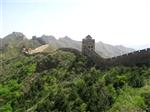

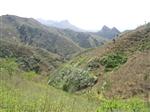
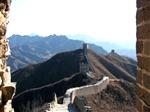
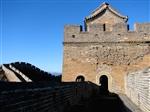
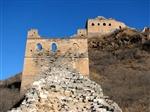
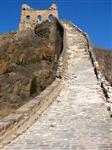
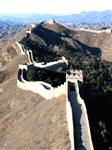
 Copyright © 1998-2025 All rights reserved.
Copyright © 1998-2025 All rights reserved.
1.
Apr 2, 2009 06:46 Reply
SHUBH said:
The Great Wall of China has always been a major attraction for the tourists and it will remain so in future also. I feel there is a strong need to preserve Great Wall of China because the increasing nos. of tourists is harming its natural look.
Adviser travel.justluxe
2.
Feb 14, 2009 15:17 Reply
CHYNAGYRL said:
Hey, are you still teaching in China? I think you are getting to be a China veteran by now! I visited the same area of the Wall in 2005, and it's definitely a route that I would like to take a return trip to. Your article brought back my memories of years ago. Thanks for the review :-)